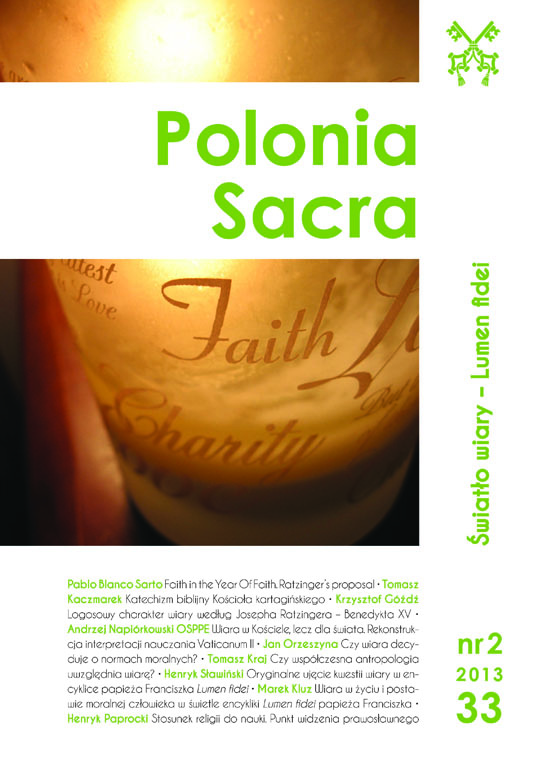Stosunek religii do nauki. Punkt widzenia prawosławnego
DOI:
https://doi.org/10.15633/ps.371Słowa kluczowe:
nauka, religia, prawosławie, przewrót kopernikański, patrystykaAbstrakt
Polish astronomer Konrad Rudnicki suggested that the so-called Copernican revolution, with far-reaching consequences for western Christianity, was hardly noticed in orthodoxy. In this case, the domain of discoveries and scientific truths remained distinct from the strictly theological domain. The Earth was treated as a mystical centre of the universe because of the Incarnation of Christ, which did not mean that it was also the real centre of the empirical universe. However, Copernicus’s discovery led to a rapidly progressive process of the western Church distancing itself from science. On the other hand, discoveries and scientific theories can in no case be contrary to the principles of faith, because we are dealing here with two different cognitive methods. It is the point of destination of both methods that should be the same.
As regards culture, we need to consider the fascinating relation of the Latin words cultus and cultura, which points to the fact that culture developed originally within the cult, and it was there where its source was (Fr. Paul Florenski). The real culture (and thus literature and art) must always have a dimension reaching beyond time. In this respect, every authentic work of art has a sacred character in the sense of a deep inner connection with everything that is transcendent.
When it comes to the connection between religion and science, the situation is even more evident, as God commands in the Bible: „Fill the Earth and subdue it” (Genesis 1:28), which requires education, because without it, it is impossible to master the earth.
The contradiction between science and culture on one side and religion on the other is something superficial and, indeed, must not be present, if we understand properly the role of all these areas in their mutual relations.
Pobrania
Opublikowane
Numer
Dział
Licencja
Prawa autorskie (c) 2013 Henryk Paprocki

Utwór dostępny jest na licencji Creative Commons Uznanie autorstwa 4.0 Międzynarodowe.
Autorzy publikujący w czasopiśmie udzielają jego wydawcy zgody o następującej treści:
- Autor zachowuje autorskie prawa majątkowe do utworu, a jednocześnie udziela wydawcy czasopisma zgody na jego pierwszą publikację w wersji drukowanej i wersji online na licencji Creative Commons Uznanie autorstwa 4.0 Międzynarodowe oraz zgody na wykonywanie opracowań, w tym przekładów.
- Autor ma możliwość udzielania zgody niewyłącznej na opublikowanie utworu w wersji, która ukazała się w czasopiśmie (np. zamieszczenia go w repozytorium instytucjonalnym lub opublikowania w książce), wraz z informacją o jego pierwszej publikacji w czasopiśmie.
- Autor może umieścić swój utwór online (np. w repozytorium instytucjonalnym lub na swojej stronie internetowej) jeszcze przed zgłoszeniem utworu do czasopisma.

